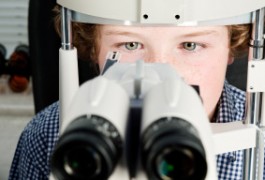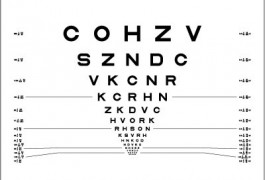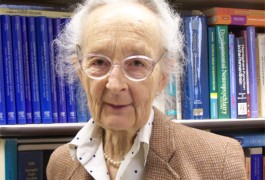Vision or hearing loss ups autism risk
Are you implementing an early detection program
/
Early detection hearing screening
Early detection Vision Screening
“[The study] underscores the need for the development of additional tools and awareness for the co-occurrence,” says Kim Van Naarden Braun, principal investigator of the Metropolitan Atlanta Developmental Disabilities Surveillance Program (MADDSP), which conducted the study.
The study found some other trends in the prevalence of the disorders: For example, children who have both hearing loss and autism also tend to have cerebral palsy and intellectual disability. And more of the children who have both hearing loss and autism are boys than girls (15 compared with 3).
Children with poor vision and autism are more likely to be born early, have a low birth weight and be intellectually disabled than are those who have a visual impairment alone. Children with poor eyesight seem to fall through the cracks — they are diagnosed with autism nearly two years later than their normally sighted peers.
This disparity highlights the need for diagnostic tools that account for children with autism who have sensory challenges, experts say.
“This study may certainly have implications for how one might treat or intervene with children who have this combined set of problems,” says Karl Kuban, professor of pediatrics and neurology at Boston University, who was not involved in the study.
Compiling records:
Early detection hearing screening
Early detection Vision Screening
The MADDSP, part of a network set up by the federal Centers for Disease Control and Prevention, monitors disabilities in Atlanta. The program surveys the prevalence, characteristics and risk factors of visual impairment, hearing loss, autism, intellectual disability and cerebral palsy.
For this study, the researchers included children who have trouble seeing below the third line on an eye chart, making it difficult for them to watch television, read or play games. Those with moderate hearing loss may be aware of people talking nearby, but cannot follow the conversation without directly observing who is speaking.
Among the 230,000 children included in this analysis, 278 children have poor vision, and 20 of those also have autism. Likewise, of the 308 children with hearing loss, 18 have autism.
Doctors may attribute some signs of autism to the children’s other impairments, Van Naarden Braun says. For example, children with autism show repetitive behavior, and some with visual impairment display repetitive behaviors such as rocking or repeatedly poking their own eyes2.
Autism diagnosis in these children is also complicated by the fact that many diagnostic evaluations for the disorder rely on visual or hearing cues, such as making eye contact or responding to one’s name, notes Sylvie Goldman, clinical assistant professor of neurology and pediatrics at Albert Einstein College of Medicine in New York, who was not involved in the study.
Goldman suggests that clinicians instead assess whether the children respond socially to another of the five senses, for instance, a tap on the shoulder.
Adapting the tests might help diagnose these children with autism earlier.
Some experts point out that the study did not use standardized tests to evaluate the children for autism. Instead, a team of research clinicians combed through thousands of special education, health, hearing and vision records. “The whole diagnosis of autism is a little bit blurred,” says Kuban.
In the study, the researchers also showed that 71 of the visually impaired children, including 10 with autism, were born before completing 37 weeks of gestation.
The association between prematurity and visual impairment is interesting, but it is important to know exactly how early these babies were born, Kuban says.
“The biggest risk for autism in the low-gestational-age group is in the very young gestational age of under 28 weeks,” he says. “The 36-weeker is quite a different animal than the 25-weeker.”
Also, 53 children with poor vision, including 3 with autism, and 44 children with hearing loss were born with a congenital condition, such as Down syndrome.
“I think that underscores the point that at least some of the association of visual and hearing impairment may be related to [an] underlying disease or genetic abnormality,” Kuban says.
He adds that the numbers are too low to draw any firm conclusions about preterm birth or congenital problems, however.
The network evaluates records from 8-year-olds every two years, so the database is expected to grow.
“As we go forward with our surveillance here and accumulate more samples over time,” Van Naarden Braun says, “we can answer some of these other questions.”
Early detection hearing screening
Early detection Vision Screening
References:
1: Kancherla V. et al. Disabil. Health J. 6, 333-342 (2013) PubMed
2: Molloy A. and F.J. Rowe Strabismus 19, 77-84 (2011) PubMed





3Comments
Join The Discussion
By joining the discussion, you agree to our privacy policy.